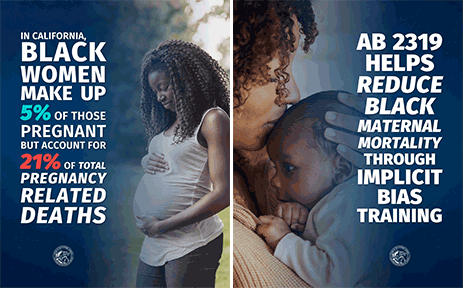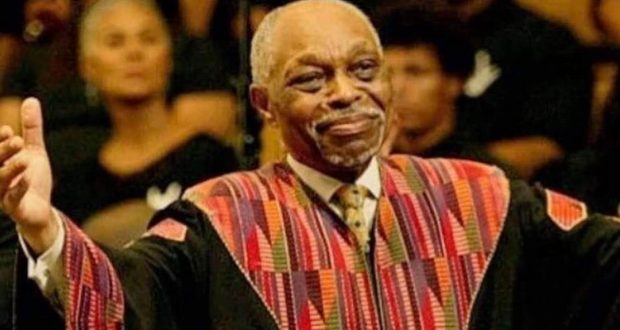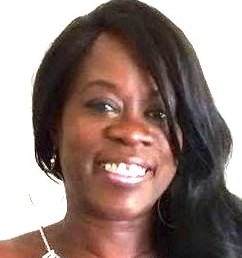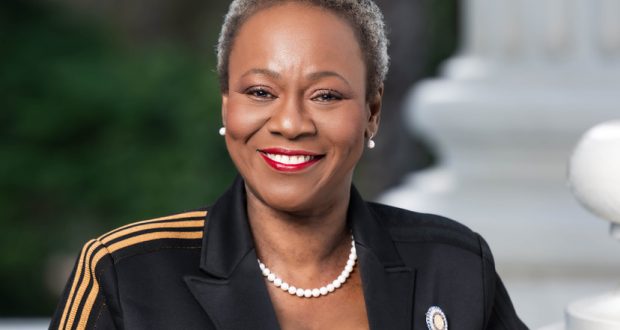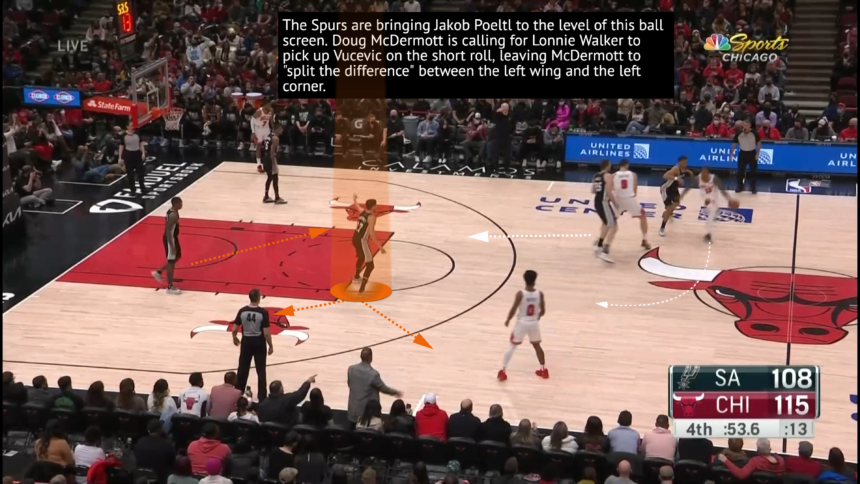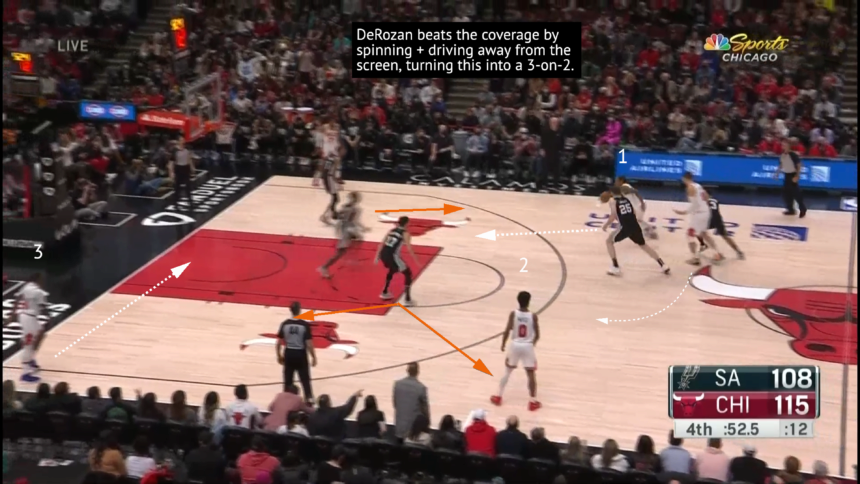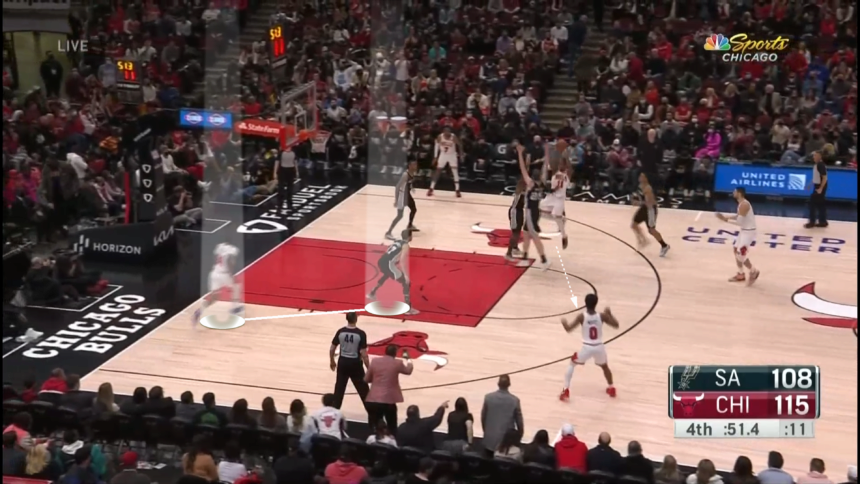By Mat Issa
You know what makes the Joker such an iconic villain? Since the day he introduced himself to Batman and the rest of Gotham City, he’s found ways to push his criminal deviancy to new heights. After spending years of wiping out countless innocent civilians, he ramped things up by making his agendas personal. He murdered Commissioner Gordon’s wife, paralyzed his daughter and viciously tortured and killed (supposedly) the second Robin, Jason Todd.
When Trae Young dropped 32 points in his pro playoff debut and followed it up by telling the fans at Madison Square Garden to [shut the front door], he firmly cemented himself as the NBA’s new villain. And in doing so, he put a big red target on his back.
To his credit, however, Young has responded to the increased scrutiny by doing what all great villains do — leveling up his game accordingly.
This season Young has improved in a handful of one-number offensive metrics (OBPM, O-LEBRON, OFF RAPTOR and OFF EPM). But even the best catch-all metrics don’t really “catch it all.” So to compensate, I dug into the film to see how Young has improved his game since his public service announcement in New York last summer.
Finishing At the Rim
A lot has been made about the new points of emphasis in officiating and how it may be mitigating the value of free-throw dependent players. Young himself has not been immune to the effects of the current standard, as his “free throws per 75 possessions” total has taken a sizable hit from 9.5 to 7.4 (per Basketball-Reference). Yet, despite his dip in the most efficient shot on the court, Young has actually managed to improve his Relative True Shooting percentage from +1.7 to +3.2 (per BREF).
One reason for his uptick in overall efficiency has been his massive improvement in the second-most efficient area on the floor — the rim. This season, Young is converting at a career-high 60.0% clip while also taking more shots from the restricted area than he did last season (per Cleaning the Glass).
Young isn’t particularly overpowering (about 180 pounds soaking wet), and while he may be quick, he doesn’t cover too much ground on a per stride basis. So to atone for his inability to naturally create separation in the paint, Young has leaned almost entirely on his craft:
Opportunistic mad dashes when no bigs are near the paint, changes in speed, wrong-footed finishes, fancy dribble moves — all of these things are now firmly ingrained in his vocabulary, and they’ve contributed to his rise as an above-average finisher.
Perimeter Shooting
Young has also laid to rest the big-brain take that he’s somehow actually “not that great of a shooter.” This year, he’s shooting more threes than he was last season and knocking them down from each region at a more efficient rate:
Young Shooting By Distance (note: mobile users scroll right to see full table)
Shot Distance Young ’20-21 Young ’21-22
20-24 ft 37.2% 45.1%
25-29 ft 33.2% 38.0%
30-34 ft 31.3% 38.3%
*Data Provided by NBA.com
Young’s marketable improvement from 30-to- 34 feet (a.k.a. way downtown) is particularly significant because he’s launching shots from those lengths (1.5 attempts per game) more often than he has his entire career.
His proficiency in these spots also has a warping effect on the floor. Defenses must account for his presence at all times, even when he’s hanging around in a different continent.
In this clip, promising young Raptors rookie Scottie Barnes is relegated to bystander status on this possession because he must respect Young’s shooting prowess, which in turn effectively creates a 4-on-4 situation for the Atlanta Hawks’ offense. This defense-altering gravity allows Young to provide meaningful off-ball value in spite of being rather sedentary without the ball in his hands (similar to one Eric Gordon).
Picking Up The Pace
Young lacks the body type and playstyle that are emblematic of most transition warriors. As we mentioned, his strides are too abbreviated for him to use his speed to race past people, and his offensive philosophy comes from the slower, more probing Chris Paul-sian school of thought.
However, even with these limitations, he’s made a concerted effort to maximize his opportunities on the break. Young is averaging 1.11 points per transition possession, the highest mark of his career (per NBA.com). And he’s managing this by leveraging the skills that make him such a cool customer in the half-court: elite passing and a knack for knowing when to slow things down or speed them up.
Even after made shots, Young will ramp up the offense by making passes before he crosses the timeline to help jumpstart his team’s possessions.
Historically Excellent
Overall, Young’s subtle growth on that end of the court has been enough where he is now firmly in the mix as one of the 10 best offensive players in the world.
What’s even more impressive is his offensive production this year not only puts him in elite company for this season, but also places him in rarified air historically among all-time great, guile-based scoring/playmaking point guards.
Similar to what I did with Jokic and Embiid, I compared some of Young’s stats to other great offensive point guards of a similar playing style. The first chart shows each players’ outputs in Offensive Box Plus-Minus, Inflation-Adjusted Points per 75 possessions, relative True Shooting and Assist Percentage. The second chart shows where each player ranked in those stats compared to other “point guards” in those particular seasons.
(Note: mobile users scroll right to see full table)
Player (Year) OBPM* IA Pts per 75* Relative TS%** AST%**
Young (’21-22) 4.4 28.8 +3.2 46.3%
Harden (’16-17) 6.5 29.2 +9.1 50.7%
Paul (’07-08) 5.3 23 +3.6% 52.2%
Nash (’06-07) 5.2 20.4 +11.3 50.1%
Price (’91-92) 4.6 22.5 +7.9 37.9%
*Data provided by Backpicks
**Data provided by Basketball Reference
Player (Year) OBPM* IA Pts per 75* Relative TS%** AST%**
Young (’21-22). 1st 1st 2nd 2nd
Harden (’16-17). 1st 1st 3rd 4th
Paul (’07-08) 1st 2nd 6th 1st
Nash (’06-07). 1st 5th 1st 1st
Price (’91-92). 1st 1st 1st 4th
*Data provided by Backpicks
**Data provided by Basketball Reference
One thing that stands out to me is that Young is the only one among these five players to be in the top-three in all these categories. Of course, this is by no means conclusive evidence that his performance this year is better than the performances of these all-timers in those seasons; however, it does illustrate the point that his blend of scoring and playmaking holds up with some of the best to ever do it.
This data also indicates that Young has followed up his grand debut on the world stage with a sequel even more impressive than the original. And to top it off, this time, he’s doing it with the hatred of the league on his shoulders.
I guess I shouldn’t be that surprised, though, because Young’s a villain now, and if he keeps leveling up the way he has, he’ll be a damn good one at that.
Looking to go to the hottest concerts, sports, theater & family shows near you? Get 100% guaranteed tickets to more than 125,000 live events from TicketSmarter, the official ticket marketplace of BasketballNews.com. Order online now!
Produced in association with BasketballNews.com.
Recommended from our partners
The post Trae Young Made Himself The Villain, And He’s Leveled Up Accordingly appeared first on Zenger News.
 Westside Story Newspaper – Online The News of The Empire – Sharing the Quest for Excellence
Westside Story Newspaper – Online The News of The Empire – Sharing the Quest for Excellence

